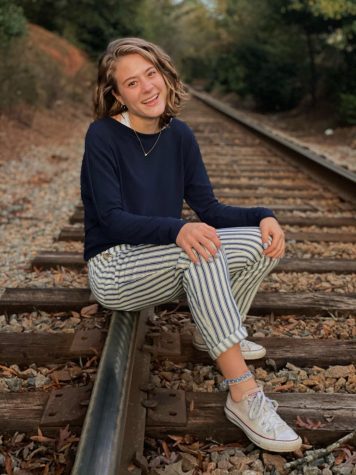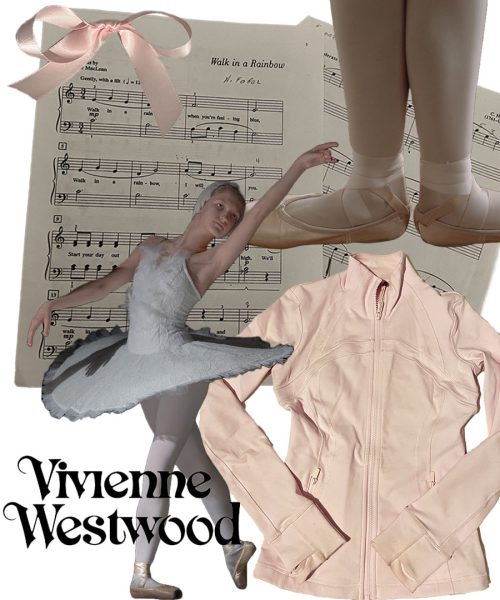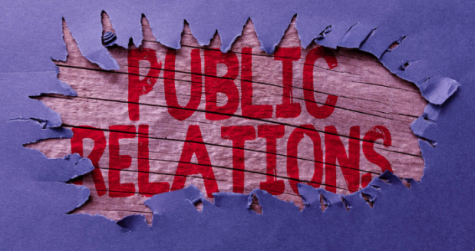Period drama popularity resurfaces with Netflix’s “Bridgerton”

Gone are the days when contemporary aesthetics, modern verbiage and coeval characters held the limelight of film and television. Netflix’s“Bridgerton’, released’ in December of 2020, has now become the streaming service’s biggest series ever at 82 million household views, exposing the media’s fascination with period dramas.
The term “period drama” refers to any film or show that takes place in the past and features topics, costumes and events relevant to that era. Although these productions have no specific time period they must be set in, most people distinguish period dramas as taking place during the 19th century. Recently, original period dramas (along with remakes of the classics) have increased in prevalence, allowing the genre to reclaim its hold on consumers.
“I think period dramas are becoming more popular because they allow the viewer to escape into a ‘new world,’” freshman Jack Keller said. “The world has seemed pretty glum lately with everything that’s happening, so I think reintroducing these stories might alleviate some of the heartache people are feeling.”
However, period dramas are not without their own afflictions. Many of these productions explore the challenges of life and the highs and lows of romance. “Bridgerton” delves into many of these romantic struggles over the course of its eight episodes.
“My favorite [period drama] is ‘Bridgerton’ because of the dramatic storyline,” senior Kassidy Whitenight said. “[‘Bridgerton’] takes place during the Regency period, when women were meant to marry a man assigned by the male in charge of the household.”
During this era, the desires of women were often put on hold or denied entirely due to what society deemed acceptable. Women were expected to get married, have children, and take care of the family rather than make a life of their own. This sexism is portrayed in most period dramas through the courting and marital processes but is disguised as romance.
“The two main characters, Daphne and Simon, have desires that contrast from the norms of society at the time and ironically get married to avoid the typical marriage process,” Whitenight said.
Conspiratorial from the start, Daphne and Simon experience tumultuous relationship, leaving viewers on the edge of their seats as to whether or not the pair will end up together.
“I think people were anxiously awaiting what would happen in ‘Bridgerton’ because of all the tension between [Daphne and Simon],” history teacher Emily Vespo said. “Sometimes they seemed to despise each other, but other times it seemed like they were totally in love.”
Pieces created to represent the time period often feature this same love-hate relationship in an effort to portray the complexity of romantic relationships. Factors such as class, social standing, laws, and customs stood in the way of a “seamless” romance during these settings. This same “enemies to lovers” trope is present in the 1813 publication of Jane Austen’s novel “Pride and Prejudice,” which has evolved into 17 film adaptations to date.
“I think there have been so many movies made about [‘Pride and Prejudice’] because there are so many ways someone can portray the characters,” Keller said. “I feel like all the different actors and directors just wanted to put their spin on the story.”
Protagonist Elizabeth Bennet traverses the repercussions of making hasty judgments and the difficulties of romance over the course of the piece. She and her romantic interest, Mr. Darcy, are at odds for most of the story due to Darcy’s aloofness. After months of animosity, Darcy finally breaks down and confesses his feelings for Elizabeth. However, she rejects his riveting, heartfelt proposal.
The 2005 version of this proposal scene features Darcy (played by Matthew Macfadyen) and Elizabeth (played by Keira Knightley) standing in the pouring rain as he confesses, “I have struggled in vain and can bear it no longer. I have fought against my family’s expectation, the inferiority of your birth, my rank. I will put them aside and ask you to end my agony. I love you. Most ardently. These past months have been a torment. I came to Rosings only to see you. Please do me the honor of accepting my hand.” His sincerity is met with Elizabeth’s rejection.
“I love this scene because the viewer can see how desperate Darcy is to show his affection for Elizabeth, but he still ends up messing everything up,” Whitenight said. “There is just so much raw emotion, and you can see the heartache they both are experiencing.”
However, the despair of this scene does not last. Further on in the film, Elizabeth and Darcy fatefully meet in a field. Darcy lowers his pride once again and confides, “You have bewitched me body and soul. And I love, I love, I love you.” After having reflected over her own feelings and revising her initial scrutiny of Darcy, Elizabeth admits she feels the same and the pair ends up together at last.
“I like how the viewer can see both Darcy and Elizabeth grow over the course of the film,” Vespo said. “However, I feel like the ending is a little predictable, just because most movies and books end with the two characters ending up together.”
Louisa May Alcott’s 1868 publication of “Little Women” contradicts this common belief. This period piece tells the heartwarming tale of the March sisters: Amy, Jo, Meg, and Beth. Throughout the story, the sisters experience poverty, sexism, the effects of the Civil War, tragedy, and, yes, romance. However, the overarching theme is that one must bear her burdens with a smile on her face and make the most of every moment.
“‘Little Women’ is such a good movie,” Whitenight said. “I love how we can see each of the characters grow into themselves. Meg succeeds in her dreams of starting a family, Jo finds love in New York and begins publishing her writing, and Amy goes on to marry [family friend] Laurie and continue studying art. Laurie also branches off from his entanglement with Jo to find love, which I think is important to his character.”
The story covers every aspect of a typical period drama with its romance, sisterly drama, and sexism. However, the ending comes with a twist most people do not expect.
“I totally expected Laurie and Jo to end up together at the end of ‘Little Women,’” Vespo said. “Their banter back and forth and the intensity of Laurie’s love for Jo really trick everyone into thinking they end up together.”
After rejecting Laurie’s proposal, Jo travels to New York to become a teacher, publishing her written pieces on the side. Laurie sets off to find his own path, partying along the way. He ends up reuniting with the youngest March sister, Amy, and after scenes filled with the sparks of romance, the two get married.
“I was always just glad that Jo found someone, too,” Whitenight said. “I feel like that whole situation would have been more awkward if Jo didn’t move on from her romance with Laurie, too. I enjoy the twist this drama adds to the story, though. It sets ‘Little Women’ apart from other period dramas.”
The film industry strays from Alcott’s idea of a unique story and continues to pump out period dramas that detail similar events and plots. Despite the genre’s current popularity, one wonders when these simplistic films will fizzle out in popularity.
“I think period dramas will stay popular, but only to people who have interest in them,” Whitenight said. “With technology and movie production improving, period dramas will become aged if they do not keep up with the times. But, if executed well, period dramas will maintain their popularity because of the sense of escape they create.”

My name is Abbey Keller and I am a senior this year! I am the Sports Editor, and have been on the Spartan Shield staff for two years now. When I’m not...




